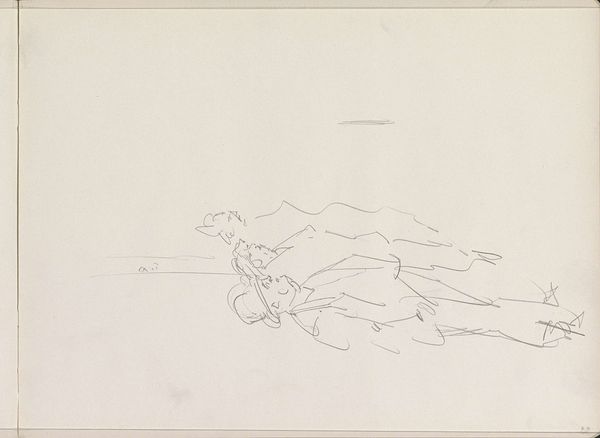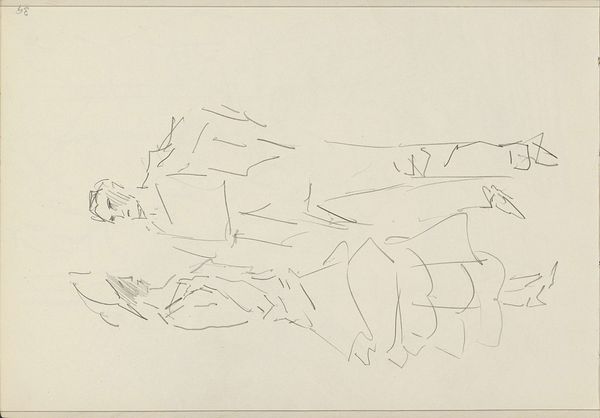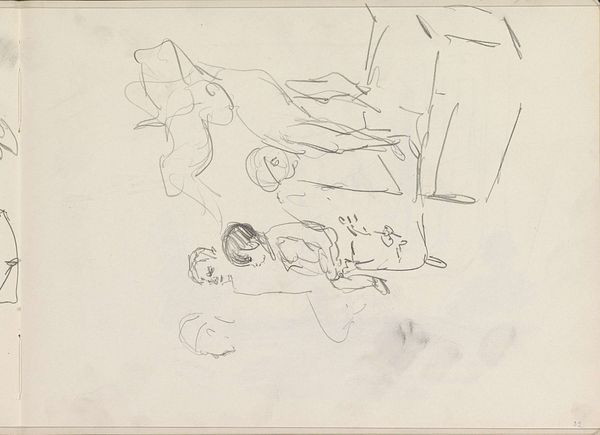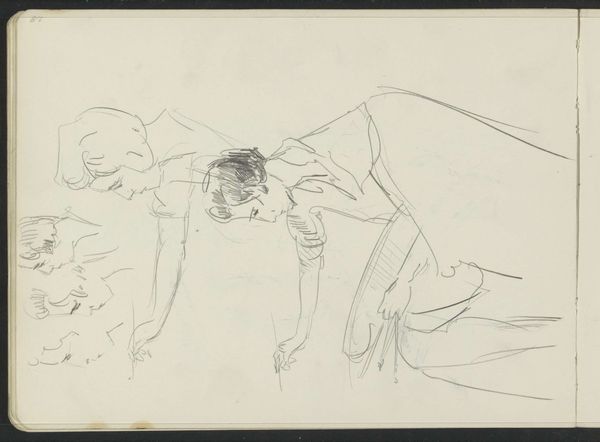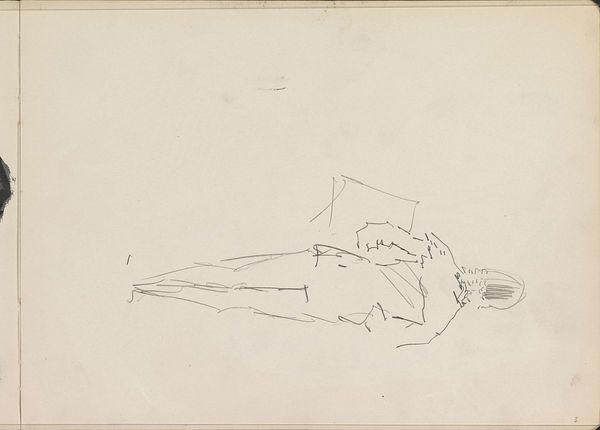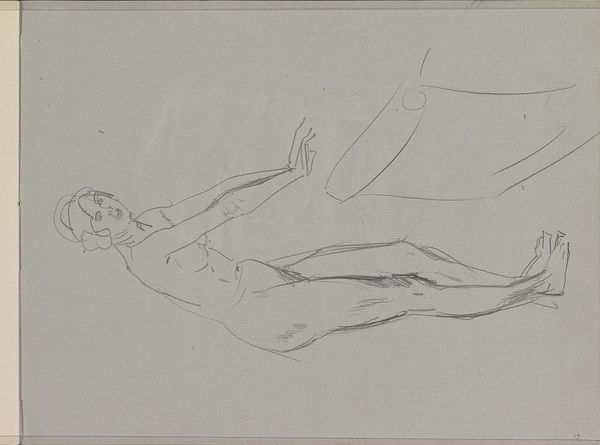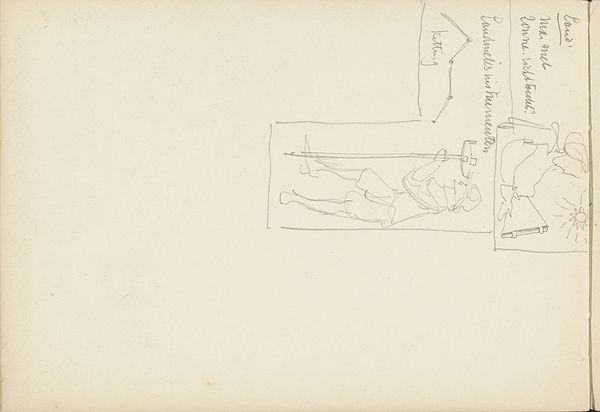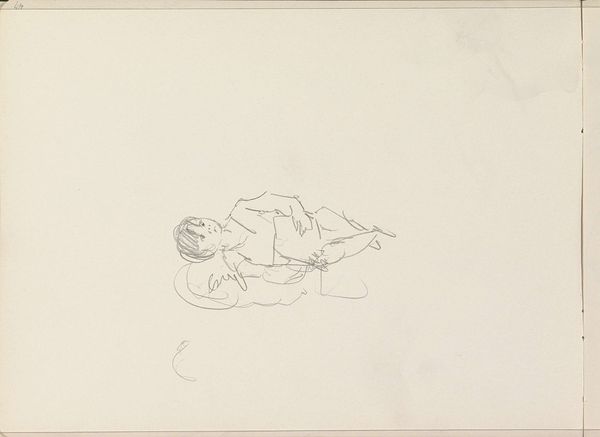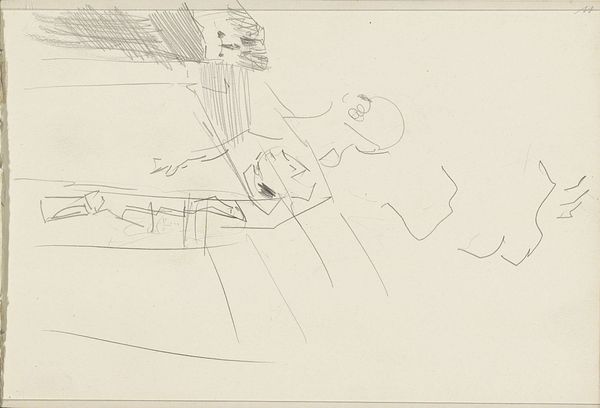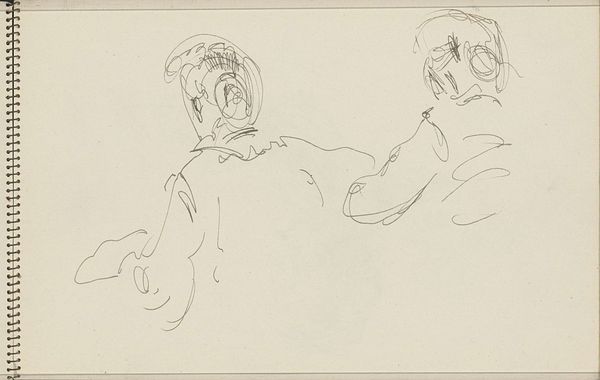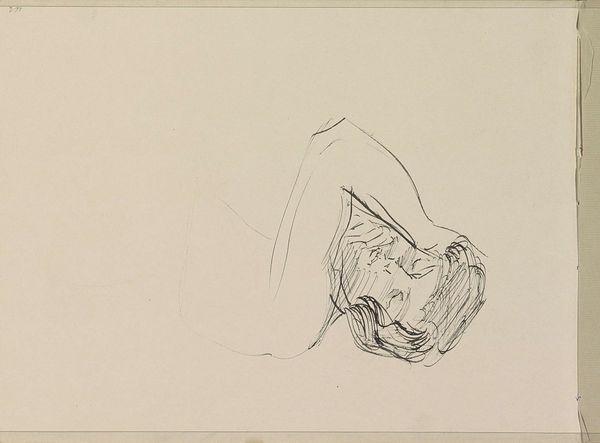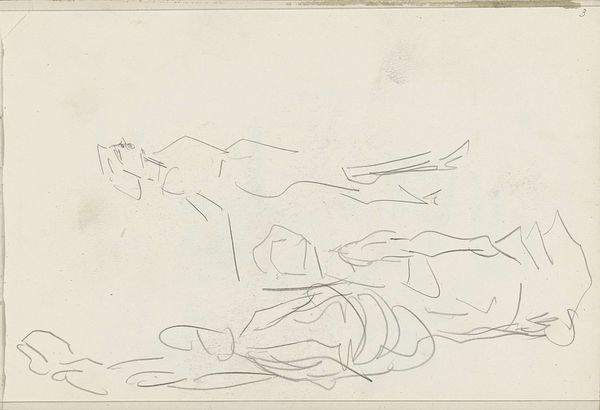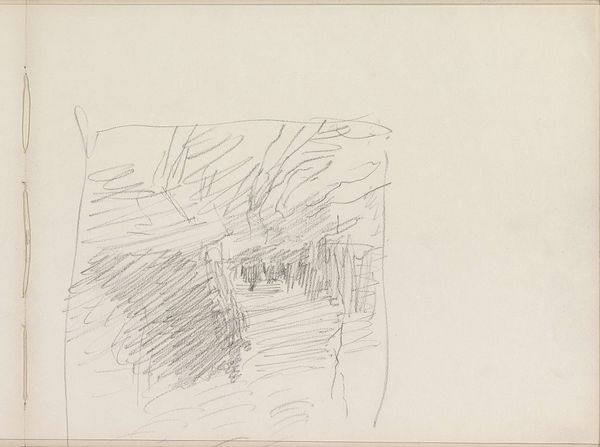
drawing, pencil
#
portrait
#
drawing
#
amateur sketch
#
light pencil work
#
thin stroke sketch
#
pencil sketch
#
sketched
#
incomplete sketchy
#
figuration
#
personal sketchbook
#
idea generation sketch
#
pencil
#
sketchbook drawing
#
initial sketch
Copyright: Rijks Museum: Open Domain
Curator: This is a quick pencil drawing by Isaac Israels, created sometime between 1915 and 1925. It’s titled "Twee staande vrouwen en een man," which translates to "Two Standing Women and a Man." You can find it here at the Rijksmuseum. Editor: Immediately, I notice the sparseness, the ethereal quality of the figures barely there on the page. There's a kind of melancholic grace in their fragility. Curator: The sketchiness definitely gives it that feeling, doesn’t it? Considering Israels’ involvement with representing the fashions and social lives of the elite in the early 20th century, this kind of study would've been important for rapidly capturing figures in movement. We get a peek into his process. Editor: Yes, this drawing reads like a fleeting moment, almost captured incidentally. Look at how economical the lines are. They evoke form without defining it completely. It plays with suggestion and absence. Is there a specific composition here, or is it intentionally informal? Curator: Israels often rejected formal academic styles in favour of impressionistic techniques that highlighted modern, urban experiences. Here, he is concerned with quickly mapping a scene more than producing a finalized representation. I see a reflection of broader social shifts during and after World War One, toward more democratic, less posed portraiture, if you will. Editor: Perhaps, but the almost ghost-like presence, to me, evokes themes of memory or transience, accentuated by the soft graphite. See how light catches the figures and blends into the background. Curator: Exactly. I wonder, did the Great War change how he thought about documenting people? His earlier works are far more celebratory. The casual nature hints at changes in artistic patronage, too; a move away from formal commissions. Editor: It’s fascinating how a piece so simple can elicit such complexity. Curator: It reminds us that art, at any stage, reflects both personal vision and broader historical currents. Editor: I agree. This study's beauty truly resides in its understated presence, allowing the viewer to complete what’s only suggested, evoking its own intimate story.
Comments
No comments
Be the first to comment and join the conversation on the ultimate creative platform.
